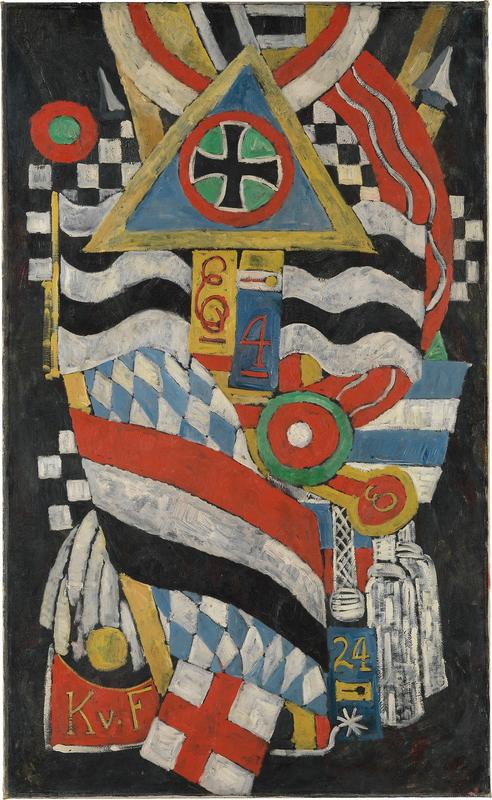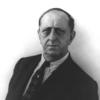More about Portrait of a German Officer
- All
- Info
- Shop

Contributor
While you might not be able to tell from a quick first glance, Marsden Hartley painted Portrait of a German Officer as a life-sized tribute to the German Lieutenant Karl von Freyburg, who was also his lover.
Hartley, originally from Maine, moved to Paris in 1912 then to Berlin in 1913. When Hartley first arrived in Berlin, the city was in the midst of brief, creative, phase with a thriving, sexually liberated community (although there were harsh laws against homosexuality). At the same time as this period of creativity and sexual liberation, Berlin also possessed an intense sense of German nationalism. After all, World War I was just around the corner. Hartley loved German culture and pride, and he frequently attended Berlin’s massive army parades.
While in Berlin, Hartley met artists Wassily Kandinsky and Franz Marc whose abstract works likely influenced his own. He also met the German military officer and sculptor, Arnold Rönnebeck, and subsequently Rönnebeck’s cousin, a tall, blonde Lieutenant named Karl von Freyburg. It was speculated that during Hartley’s next two years in Berlin, he fell in love with von Freyburg.
When the war began, Von Freyburg died in battle in 1914 at the age of only 24. It was at this point that Hartley painted Portrait of a German Officer, which takes the opposing forces of Berlin’s liberal sexuality and Berlin’s intense German nationalism and combines them in an epic testament to von Freyburg.
The collage of shapes and symbols almost appears to be a kindergartner’s table of blocks at first glance. In reference to the tightly packed set of symbols and shapes, Georgia O’Keeffe commented that this painting, as well as Hartley’s 14 other paintings inspired by the German military, reminded her of “a brass band in a closet.” The piece is riddled with symbols of Lieutenant von Freyburg and the German military. For example, Hartley includes a Bavarian flag, KvF initials, von Freyburg’s age (24), his regiment number (4), and the Iron Cross that he received posthumously. Hartley actually kept von Freyburg’s Iron Cross in his home as a remembrance.
Hartley received significant backlash for the portrait because of its German nationalism in a time of war. He never apologized for his pride in German culture, and it’s speculated that this refusal to apologize along with his clear gay pride may have had a significant hindering effect on his overall development as an artist in the United States in the early 1900s.
Sources
- "Marsden Hartley Most Important Art | TheArtStory." The Art Story. Accessed August 21, 2018. https://www.theartstory.org/artist-hartley-marsden-artworks.html
- "Review: 'Marsden Hartley: The German Paintings' at LACMA." Apollo Magazine. August 11, 2014. Accessed August 21, 2018. https://www.apollo-magazine.com/review-marsden-hartley-german-paintings….
- Smith, Roberta. “Marsden Hartley Gets His Due in Berlin.” The New York Times, The New York Times, 12 June 2014, www.nytimes.com/2014/06/15/arts/design/marsden-hartley-gets-his-due-in-….
- The Metropolitan Museum of Art, I.e. The Met Museum. Accessed August 21, 2018. https://www.metmuseum.org/toah/works-of-art/49.70.42/.
Featured Content
Here is what Wikipedia says about Portrait of a German Officer
Portrait of a German Officer is an early 20th century portrait by American modernist painter Marsden Hartley. Done in oil on canvas, the portrait depicts the abstract figure of an Imperial German officer as being composed entirely of military decorations and badges of rank. The painting is currently on display at the Metropolitan Museum of Art.
Check out the full Wikipedia article about Portrait of a German Officer













